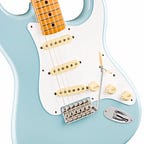Sometimes I can see on video that what a guitarist play in a studio recording booth differs in the sound from the final mix. Why does it happen? (Part I. Guitarist.)
Part I. Guitarist.
Going to a studio, a guitarist should have a clear idea of the musical image he is going to create (record). After all, it is solely his own point of view. Unique and inimitable. He must get into the emotion that coincides with that very image and simply record it.
But does it all happen this way in practice?
Let’s begin with the musical image. If a guitarist talks all the time about how fast he is, how stylish is his playing, how dynamical it is and how he plays with soul… where the musical image is here? This talk is about the details. It is about things that are a prerequisite. And not each of them separately, but all together. And this is only to prevent from mistakes in the performance of the musical score. It is still very far from the musical image! And if so, you will never hear it. The guitarist himself will state it in the next pompous interview or the one who writes about him. If there was a musical image, we wouldn’t have to talk so much about it. They do not call it this way, of course. They have got their own words to convince people to hear the thing that does not exist there at all.
Next is the technical part.
Tuning.
Very often you can hear a very out of tune guitar on the recording. Neither the scale was set up, no tuning was performed. Endless false bends relative to the tuning as well as to the absolute pitch shows that either the person does not listen to himself or does not pay attention to the accompaniment. And this indicates the one thing only — the complete lack of the ear for music.
Sound.
I will give you just one example. Although, you could write a book on it. And more than just one!
One day, my fellow sent me a video and said: ‘Look what’s going on!’ I opened it. There was a lady. A newborn star. She was holding the guitar in such a way, that it was obvious she spent very little time with it. Suddenly, her guitar tech shown up out of nowhere. The journalist who interviewed her presented her like she was at least N. Paganini and F. Liszt in one person. He started right away with questions about sound. The tech came to the rack and turned the system on. Oh, my god! I had a feeling that I am on the street where the thunderstorm is raging. And in the car 30 meters away from me, somebody has turned on the music. There was much more noise than the signal. Then the lady talked about different sounds (programs) that she set up, and the tech was switching between them. All of them were very noisy! And how she “played”! It was even “better” than her “sound”. Although it seemed, nothing could be “even better”. I turned off the video… Thus, the majority of guitarists go to the studio with such the “sound”. And how much gain and compression there is in it, at least one delay… And in this mixture of noise and effects somewhere in the depths you could hear some kind of signal.
This is the source material!
The recording starts with that in 99.9% cases.
If a sound engineer who has to record all that has an ear for music and the required knowledge (though it is extremely rare to happen in pop, rock…) then without asking any questions to avoid meaningless conversation he will just arrange microphones. After that, he will send the guitarist’s signal into his headphones and record the dry signal himself. Then the guitarist will listen to the recording. Oftentimes, he will argue and ask questions why the recorded signal differs from the live one. If the sound engineer is exactly like I described above, he will say that the sound is completely identical. And he will be right in that!
If the sound engineer is like we have more regularly, he will start to tell that when the guitarist will hear the final product, the sound will be even better than the live one. This is a big lie! And it is not so important if the sound engineer himself believes it or not. This is an illusion. You cannot get better sound. You can get only different sound. And if the instrumentalist plays well and his sound is good in itself when creating the musical image, then a different sound means only a bad sound. However, my experience tells me that many people believe that magic happens with recording and mixing. And the sound gets better at once. Therefore, people who believe in this do not care about their timbre and sound production at all. The most critical thing for them is to set up those parameters to make it easier to play. And if anything is wrong, you can adjust everything in a studio. I have a lot of examples. Again for several books.
Considering all these, it is easy to guess that all of it has nothing to do with artistic image, art as a whole… The talk is only about the struggle with tuning, noise, and other technical details, that in reality must be put into shape long before the idea of recording something appeared in the guitarist’s head.
